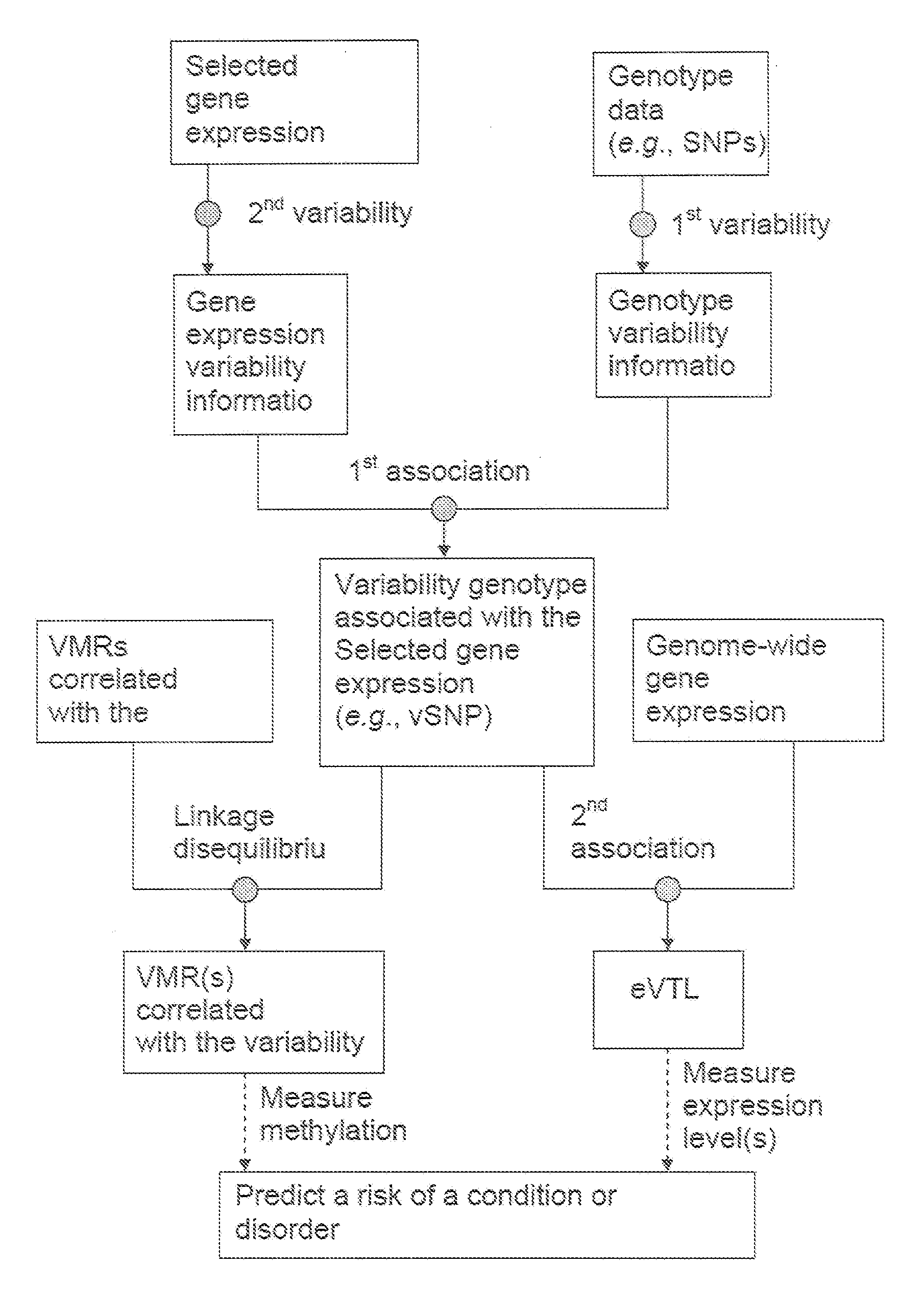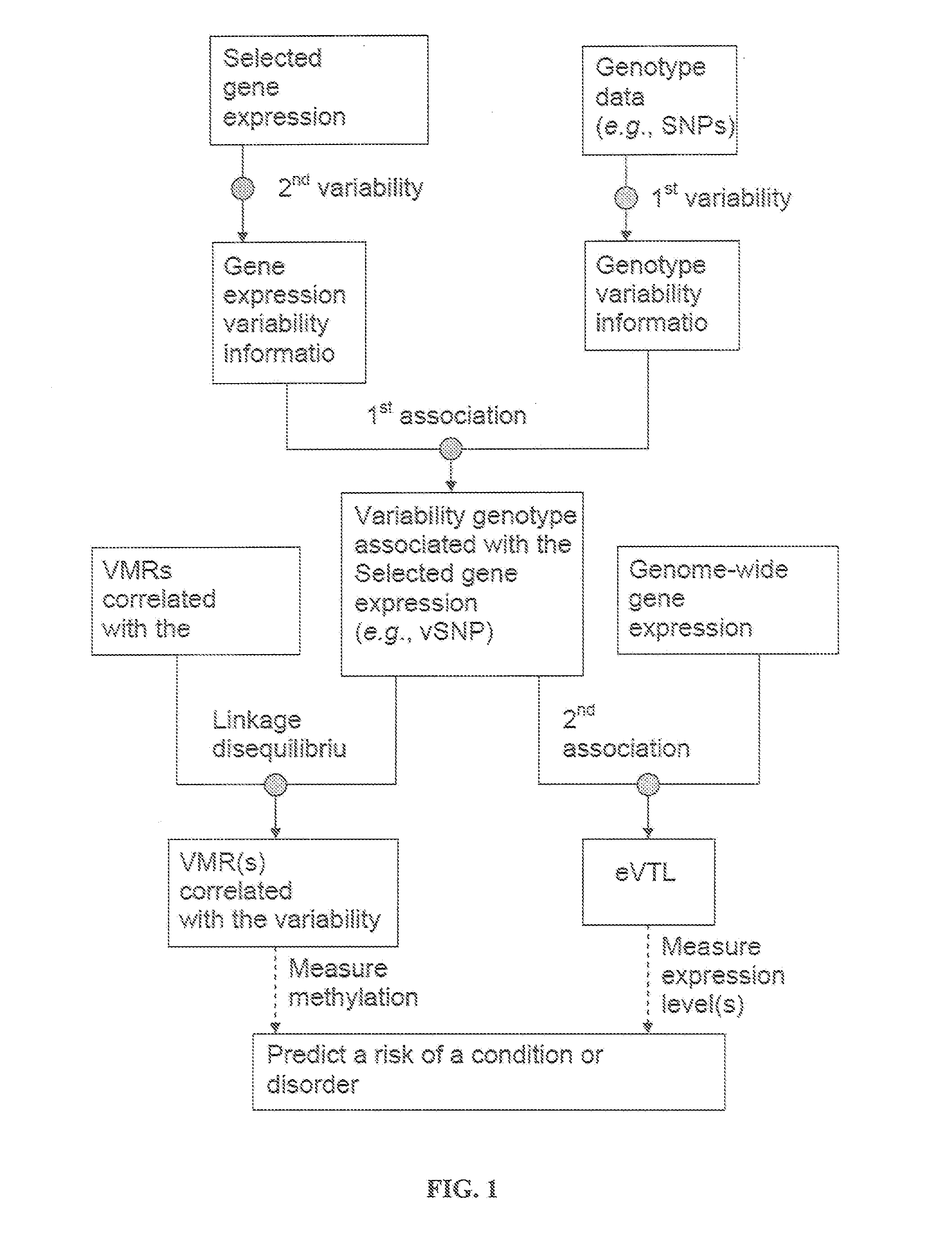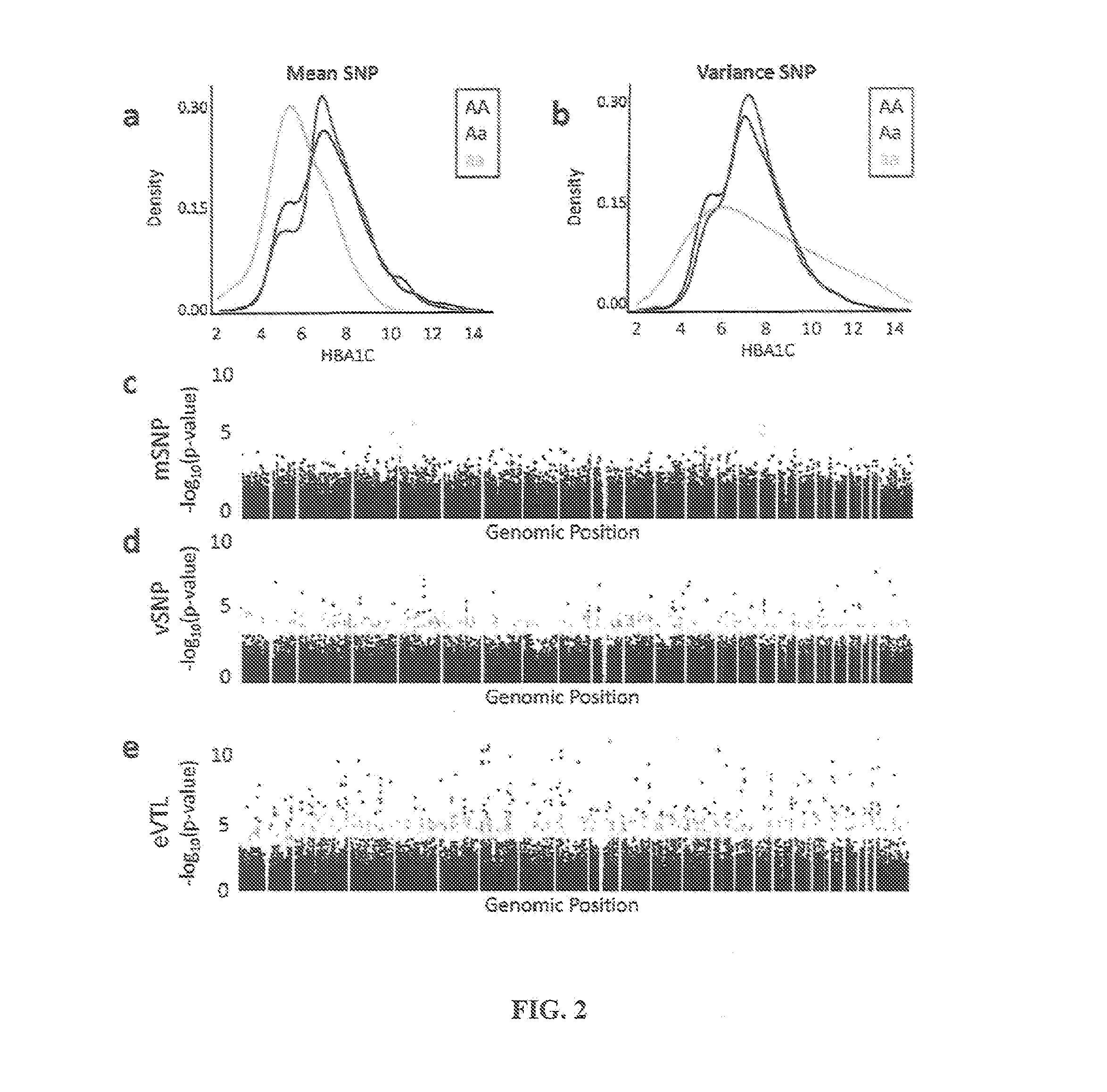Variability single nucleotide polymorphisms linking stochastic epigenetic variation and common disease
a single nucleotide polymorphism and stochastic epigenetic variation technology, applied in the field of epigenomic analysis, can solve the problem of relativly small attributable risk, and achieve the effects of small attributable risk, low odds ratio, and increased disease risk
- Summary
- Abstract
- Description
- Claims
- Application Information
AI Technical Summary
Benefits of technology
Problems solved by technology
Method used
Image
Examples
example 1
Genetic Models
[0142]The mean model for the relationship between a quantitative phenotype and the genotype for a single locus is
E[pi]=b0+bAA1(gi=AA)+bAa1(gi=AB)+bAa1(gi=BB)+ei
[0143]where pi is the phenotype for individual i, gi is the genotype, b0 is the baseline level of the phenotype, 1(gi=AA) is an indicator that the genotype for individual i is AA, bAA is the phenotypic offset for allele AA and e is the random effect of other genetic, epigenetic, or environmental variables. The model relates the expected value (mean) of the phenotype to the genotype through a regression model (Fisher (1918) Trans R Soc Edinburgh 52:388-433). The model can be modified to specify additive and dominance effects, and to include the effect of multiple loci. This model is the basis for most common tests for association between genotype and phenotype (Walsh (1998) “Genetics and Nanalusis of Quantitative Traits,” Sunderland: Sinauer Associates). A mean SNP (mSNP) is a SNP where any of the b are nonzero....
example 2
Genetic Variability Test
[0146]To identify vSNPs, a studentized general regression based test was adapted for differences in variances using an unrestricted model (Breusch and Pagan (1979) Econometrica 47:1287-94). The first step in the statistical test is to fit the Fisher model by least squares and form the residuals
ri=pi−{circumflex over (b)}0−{circumflex over (b)}11(gi=AA)−{circumflex over (b)}21(gi=AB)−{circumflex over (b)}31(gi=BB)
with estimated residual variance
σ^2=1N∑iri2.
The standardized, squared residuals, ûi=ri2−{circumflex over (σ)}−2 are regressed on the genotypes using the model
ûi=c0+cAA1(gi=AA)+cAa1(gi=AB)+cAa1(gi=BB) (1)
[0147]The test statistic is equal to nR2 where n is the sample size and R2 is the coefficient of determination for model (Fisher (1918) Trans R Soc Edinburgh 52:388-433). The test statistic is compared to the X2(k) distribution where k is one less than the number of unique genotypes.
example 3
Data Collection, Processing, and Adjustment for Surrogate Variables
[0148]Data Collection: Genotypes are obtained for 1,225 unrelated individuals with HBA1C measurements from the Genetics of Kidneys in Diabetes study. Patient recruitment and genotyping were performed as previously described (Mueller et al. (2006) J Am Soc Nephrol 17:1782-90). The dataset used for the analyses described in this manuscript are obtained from the database of Genotype and Phenotype (dbGaP) found on the world wide web at ncbi.nlm.nih.gov / gap through dbGaP accession number phs000018.v1.p1. Samples and associated phenotype data for the Search for Susceptibility Genes for Diabetic Nephropathy in Type 1 diabetes are provided by the Genetics of Kidneys in Diabetes Study, J. H. Warram of the Joslin Diabetes Center, Boston, Mass., USA (PI). Genotype data are obtained on the 210 unrelated HapMap individuals (hapmap.ncbi.nlm.nih.gov). Normalized genome-wide gene expression data are obtained on the same individuals ...
PUM
| Property | Measurement | Unit |
|---|---|---|
| Time | aaaaa | aaaaa |
| Volume | aaaaa | aaaaa |
| Fraction | aaaaa | aaaaa |
Abstract
Description
Claims
Application Information
 Login to View More
Login to View More - R&D
- Intellectual Property
- Life Sciences
- Materials
- Tech Scout
- Unparalleled Data Quality
- Higher Quality Content
- 60% Fewer Hallucinations
Browse by: Latest US Patents, China's latest patents, Technical Efficacy Thesaurus, Application Domain, Technology Topic, Popular Technical Reports.
© 2025 PatSnap. All rights reserved.Legal|Privacy policy|Modern Slavery Act Transparency Statement|Sitemap|About US| Contact US: help@patsnap.com



